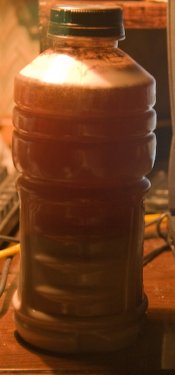Yes, point #4 is a hard stuff - that is why it was written to add very small amounts  Non-distilled water should work, however, it influences pH, so the next batch you do may have slightly different developing times. Be sure to shake it for a couple of minutes very well before you dilute the developer. All the concentrate mass must be homogenius before use.
Non-distilled water should work, however, it influences pH, so the next batch you do may have slightly different developing times. Be sure to shake it for a couple of minutes very well before you dilute the developer. All the concentrate mass must be homogenius before use.
 Non-distilled water should work, however, it influences pH, so the next batch you do may have slightly different developing times. Be sure to shake it for a couple of minutes very well before you dilute the developer. All the concentrate mass must be homogenius before use.
Non-distilled water should work, however, it influences pH, so the next batch you do may have slightly different developing times. Be sure to shake it for a couple of minutes very well before you dilute the developer. All the concentrate mass must be homogenius before use.


